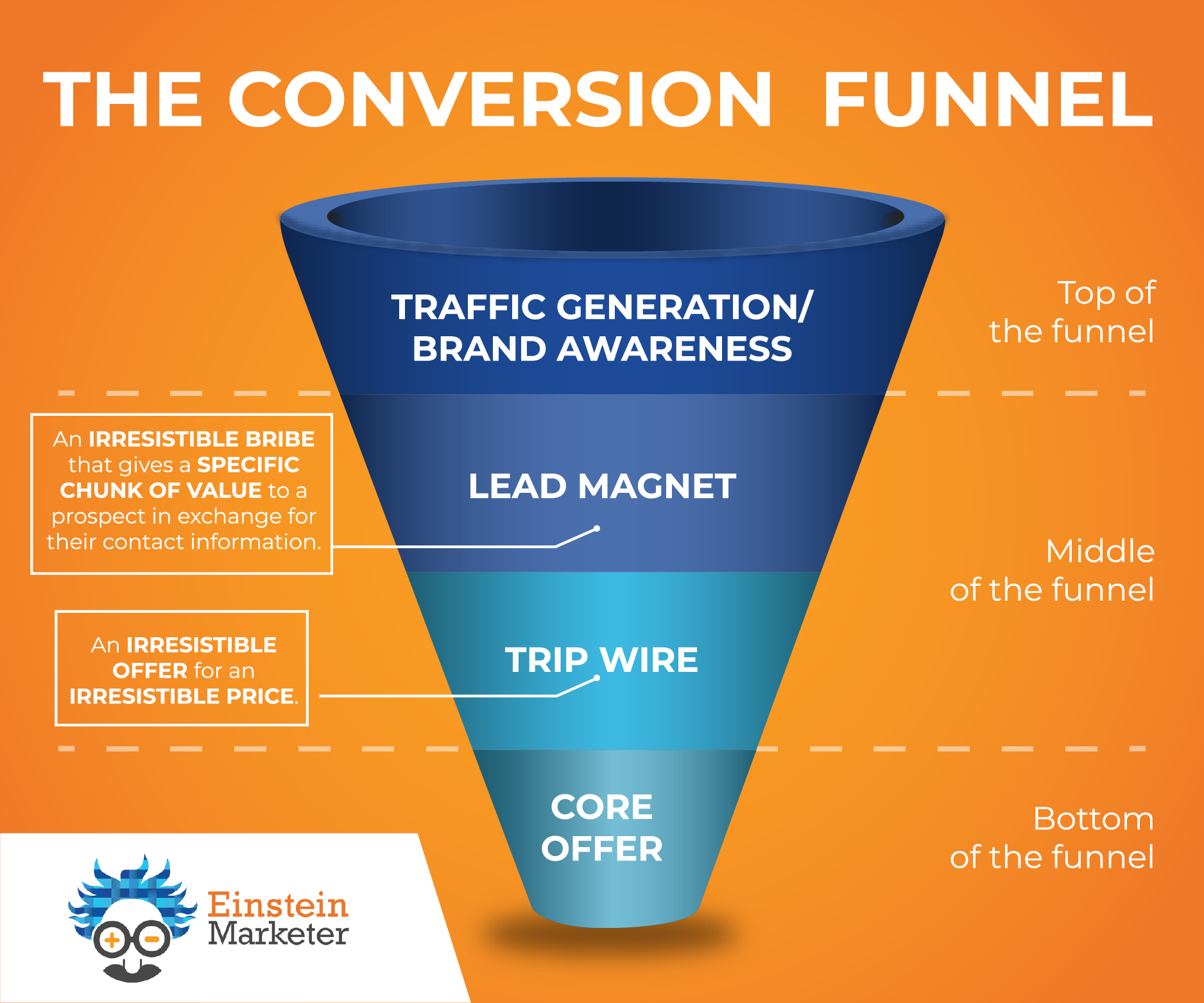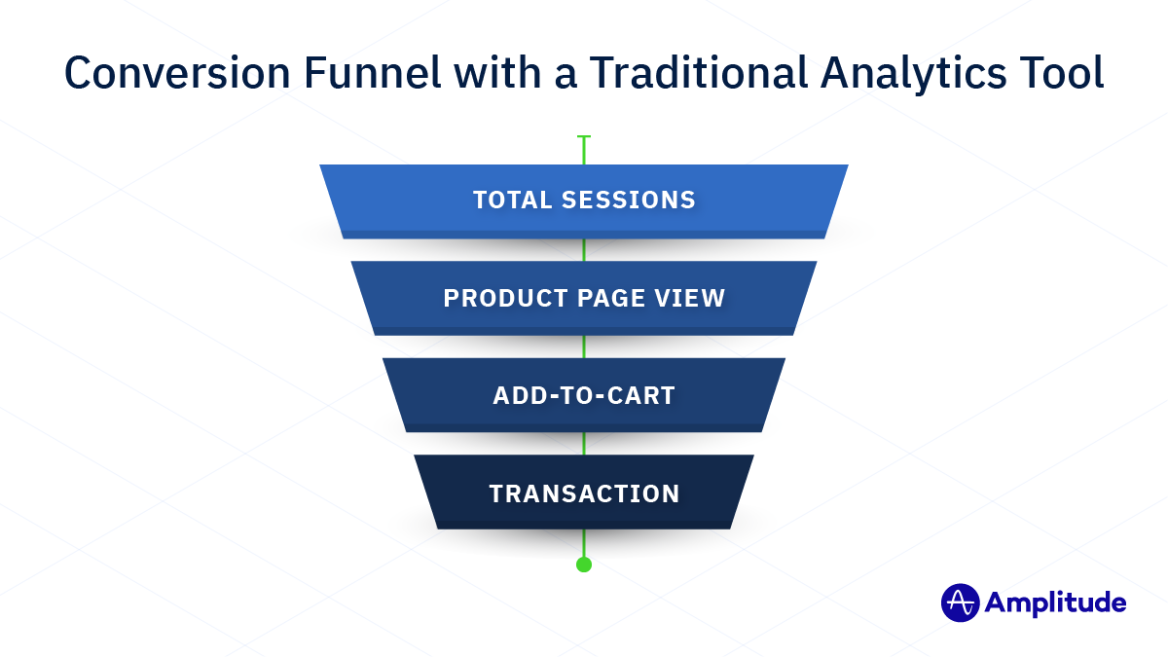Introduction
Think conversion funnel it like a pathway that leads your website visitors from just looking around to actually making a purchase. It's like guiding them step by step through the process. Continue reading to know more about it.
Definition of a Conversion Funnel

A conversion funnel is a marketing model that visualizes the journey potential customers take from awareness to conversion. It helps businesses optimize each stage, enhancing engagement and increasing the likelihood of sales or desired actions.
Importance of Understanding Conversion Funnel
Here's why grasping conversion funnels is crucial for your online business:
- Optimize Your Marketing Efforts: Understanding how conversion funnel optimization works helps you focus your marketing efforts where they matter most. You can tailor your strategies to each stage of the funnel, making sure you're reaching potential customers effectively.
- Boost Conversion Rates: Through your conversion funnel analysis, you can identify any bottlenecks or areas where visitors are dropping off. This allows you to make improvements to increase your conversion rates and ultimately generate more sales.
- Maximize Return on Investment (ROI): When you understand your conversion funnel analytics, you can allocate your resources more efficiently. You'll know which marketing channels are bringing in the most valuable leads and where you should invest more or less.
- Enhance User Experience: A well-designed conversion funnel provides a smooth and seamless experience for your website visitors. By optimizing each stage of the funnel, you can ensure that users have a positive experience and are more likely to convert.
- Measure Performance: Conversion funnels give you a clear framework for measuring the performance of your marketing campaigns. You can track metrics like conversion rates, click-through rates, and customer acquisition costs to gauge the effectiveness of your strategies.
- Drive Continuous Improvement: Finally, understanding conversion funnel optimization allows you to continuously refine and improve your marketing efforts. By analyzing data and experimenting with different tactics, you can iterate on your funnel to achieve better results over time.
Key Stages of a Conversion Funnel
Let's break down the stages of a conversion funnel into easy-to-understand points.

Awareness Stage
This is where people first discover your business, so:
- First Encounter: This is when people first discover your brand or product.
- Attention Grabber: You aim to catch their eye and make them curious.
- Channels: They might find you through search engines, social media, or word of mouth.
Interest Stage
Once they're aware of your business, you want to spark their interest so:
- Capturing Interest: Now, you want to keep them engaged and interested.
- Valuable Content: Providing useful information or entertaining content.
- Building Connection: Showing them why your product or service is worth their time.
Consideration Stage
Now that you've got them interested, it's time to amp up their consideration for your product or service:
- Active Consideration: They're thinking about whether to buy or not.
- Comparison: They might be comparing your product with others.
- Information Seekers: Looking for reviews, more details, or testimonials.
Intent Stage
Now, it's time for them to take action, sp:
- Ready to Buy: They've made up their mind and are ready to make a purchase.
- Clear Path: Your goal is to make it easy for them to take action.
- Removing Obstacles: Smooth checkout process, clear call-to-action buttons.
Purchase Stage
In purchase stage of conversion funnel, follow:
- Success!: They've made the purchase.
- Confirmation: Sending confirmation emails or order details.
- Reassurance: Providing tracking information and next steps.
Post-Purchase Stage
It ends at post-purchase stage, so:
- Building Relationships: It's not over yet; now, you aim to build a lasting connection.
- Thank You: Sending thank-you emails or messages.
- Encouraging Loyalty: Offering discounts on future purchases or asking for feedback.
Best Practices For Conversion Funnel
In this section, you’ll find the best practices to make the best out of the conversion funnel.

Conducting Conversion Funnel Analysis
Conversion funnel analysis involves examining the steps users take to achieve a desired outcome on a website or app. It identifies drop-off points, and optimizes the process to improve conversion rates.
Suggested Reading : eCommerce conversions
Tools and Techniques
Tools like Google Analytics, Mixpanel, and Kissmetrics are essential for tracking user behavior through the conversion funnel. These tools provide insights into user actions, from initial engagement to final conversion.
Analyzing User Behavior and Drop-Off Points
Understanding user behavior within the funnel helps identify where users lose interest or encounter issues. Heatmaps, session recordings, and user flow reports reveal drop-off points, enabling targeted improvements.
Conversion Funnel Optimization Strategies
Optimizing the conversion funnel involves simplifying user journeys, reducing friction, and enhancing engagement. Techniques include improving page load times, streamlining checkout processes, and ensuring mobile-friendliness.
Suggested reading: Search Engine Optimization
Improving User Experience
A superior user experience is crucial for conversion funnel optimization. Enhancing UX involves addressing usability issues, ensuring intuitive navigation, and providing clear calls to action.
A/B Testing Best Practices
A/B testing is vital for evaluating changes. Best practices include testing one variable at a time, using significant sample sizes, and running tests long enough to obtain statistically significant results.
Personalization and Targeting
Personalization increases relevance, driving higher conversion rates. Techniques include personalized recommendations, targeted content, and tailored marketing messages based on user behavior and preferences.
suggested Reading: Ecommerce Funnel
Using Conversion Funnel Analytics
It is important to use conversion funnel analytics, so:

Data Collection Methods
Effective data collection is foundational for conversion funnel analytics. Methods include tracking user interactions via cookies, implementing event tracking, and utilizing surveys for qualitative insights.
Interpreting Analytics Reports
Interpreting analytics reports involves analyzing key metrics like conversion rates, drop-off rates, and user flow. Identifying patterns and trends helps in making informed decisions to refine the conversion funnel continuously.
Frequently Asked Questions (FAQs)
How do you optimize a conversion funnel for better conversion rates?
Optimize a conversion funnel by analyzing customer behavior, A/B testing page elements, improving user experience, streamlining the checkout process, and personalizing content to guide users toward conversion.
What are the typical stages of a conversion funnel?
Typical stages include Awareness, Interest, Consideration, Intent, Evaluation, and Purchase, reflecting the customer's journey from learning about a brand to making a transaction.
Why is understanding the conversion funnel critical for online businesses?
Understanding the conversion funnel enables businesses to identify bottlenecks, optimize the customer journey, and implement strategies to increase conversion rate and maximize ROI.
How can I measure the success of my conversion funnel?
Measure success using metrics such as conversion rate, abandonment rate, click-through rate, time on page, and customer feedback to assess performance at each funnel stage.
Can you use conversion funnel analysis for services, or is it only for products?
Conversion funnel analysis is applicable for both services and products as it provides insights into the customer's decision-making process and identifies opportunities for optimization to improve conversions.
